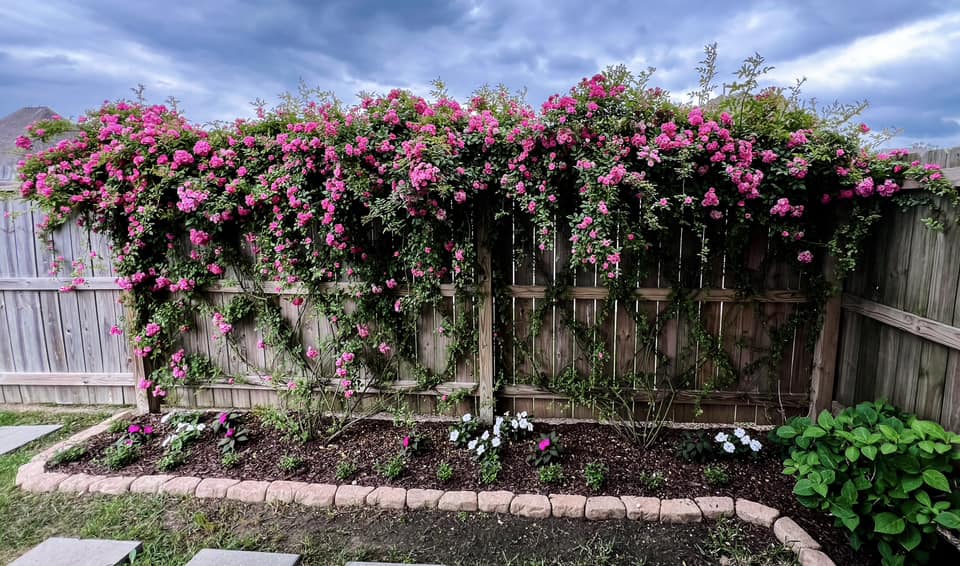A Plant like No Other
Bromeliads – a genus of the family bromeliaceae – encompass so many different iconic varieties we carry at Louisiana Nursery. From the vibrant, spikey blooms of Guzmania to the sweet fruits of the edible pineapple, you can spend hours down the rabbit hole learning about them all!
Today, we’ll cover just a few of these varieties with beautiful pictures and a care-guide to go with. Let’s start where it all begins: The wild bromeliad.

Native Habitats & Characteristics
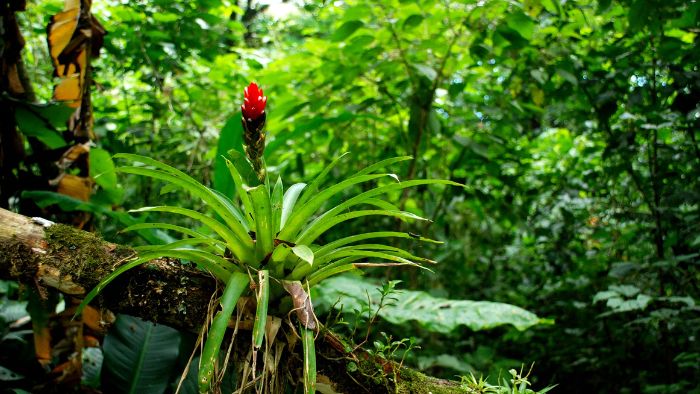
Bromeliads are a gift from the tropics & subtropics of the Americas. You can find them in a vast array of habitats including:
- Rainforest Canopies:
Many bromeliads are epiphytes, meaning they cling to the branches of trees to access sunlight and moisture in the dense forest canopy. - Rocky Outcrops & Mountainsides:
Other bromeliads prefer rocky cliffs and mountainsides, adapting to harsher conditions - Terrestrial Habitats:
Some bromeliads have evolved to grow directly in the soil, spreading their roots like the plants we’re more familiar with.
Regardless of their specific habitat, bromeliads share some fascinating characteristics that make them stand out in the plant world:
- Central Cup:
Most bromeliads feature a rosette of leaves that form a central “cup” or tank. This cup collects rainwater and debris, providing the plant with essential nutrients and moisture. - Colorful Bracts:
The vibrant blooms are what made bromeliads famous. However, what appears as a flower is actually a cluster of colorful leaves called bracts that surround the true, less-showy flower. - Unique Adaptations:
Epiphytes (air plants) have specialized scales on their leaves to absorb nutrients and moisture directly from the air. - Symbiotic Relationships:
Bromeliads form intricate relationships with other rainforest creatures. The pools of water in their cups provide habitats for insects, tadpoles, and even tiny frogs.
Our Bromeliad Varieties
Guzmania
These are those spiky, colorful bracts we talked about! Guzmania bromeliads are the most recognizable plants on this list. Whether that’s because we stock a TON or because the bright colors catch our eye, we can’t get enough of them!
For the majority of gardeners, guzmania is treated as and considered a houseplant. We stock terrestrial varieties that take well to containers, often utilizing self-watering pots to make care simple. They’re adaptable to bright window lighting, and will bloom if given enough time. Expect a mature height of 3ft and width of 2ft.
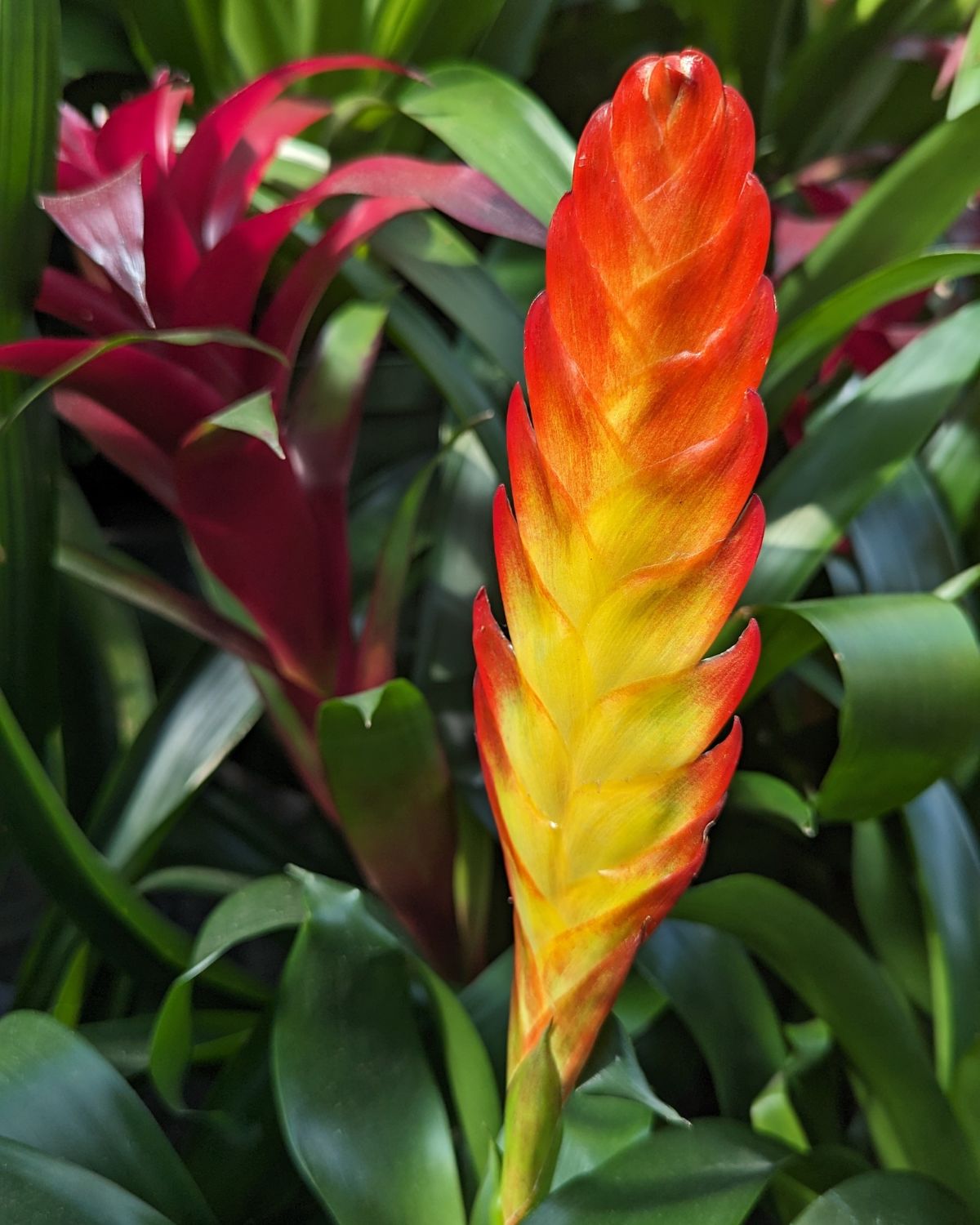
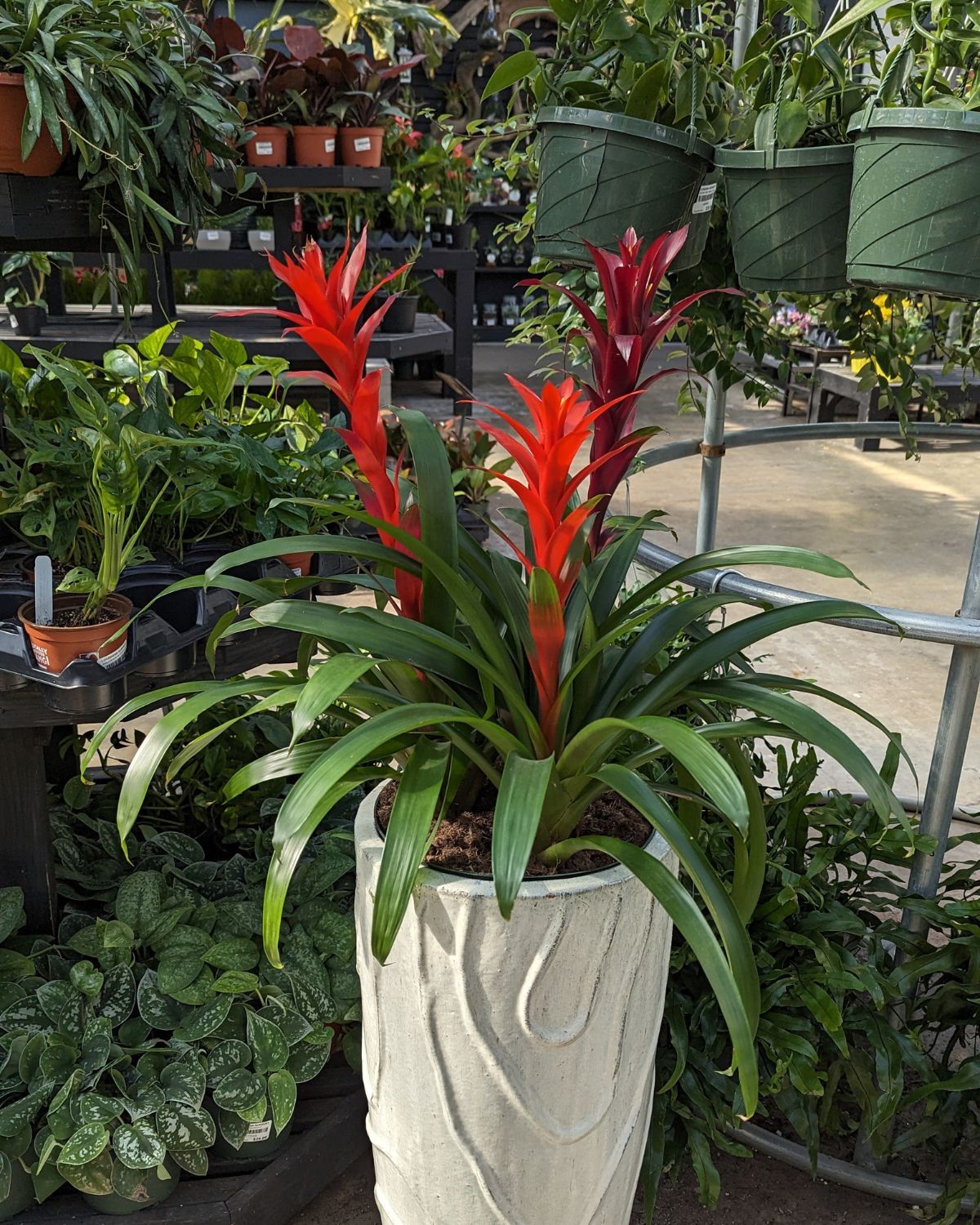

Tillandsia (Air Plants)
The category commonly referred to as “air plants”, tillandsia are interesting additions to any collection! We carry varieties with stringier or wider, straight or curled, and green or variegated leaves. Rather than potting them up, we use driftwood and other nature-scape decor to display them.
Tillandsia are epiphytic plants, grabbing moisture and nutrients from the air while anchoring themselves with small roots.
This can sound like a “set-it and forget-it” dream… However, the humidity they’re used to just doesn’t exist to the same degree inside our homes. It’s still easier than most plants, though!
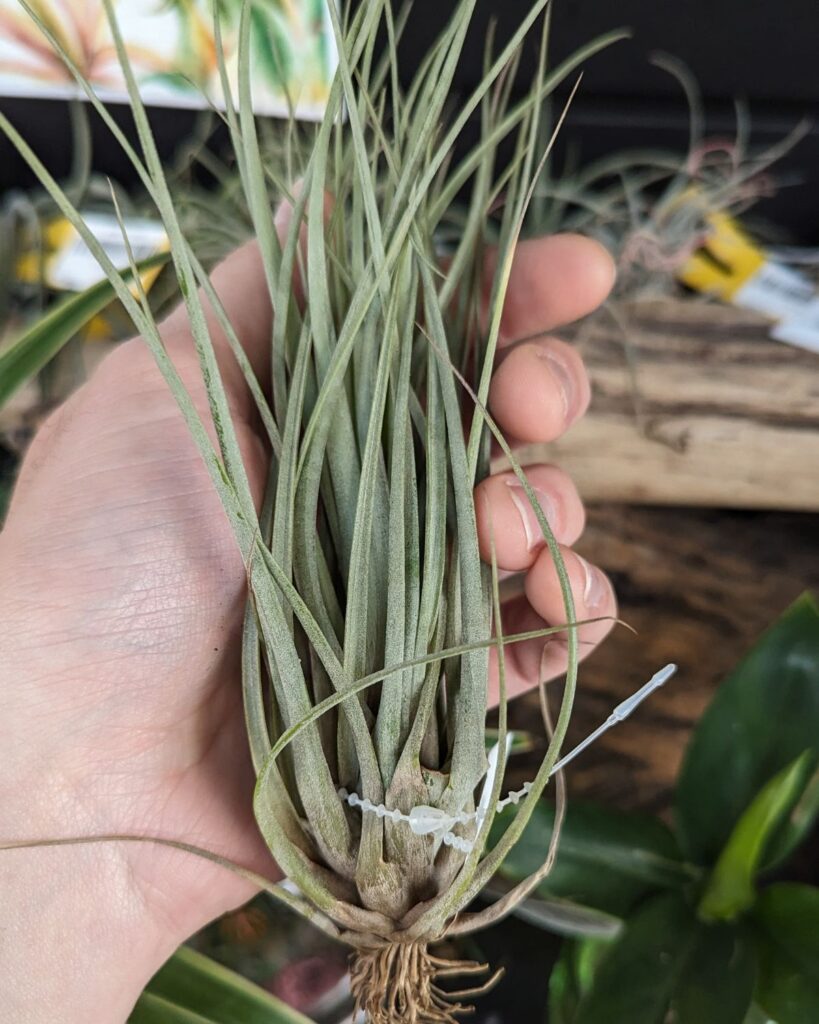
To water, take your tillandsia and soak the entire plant in a bucket for 30-minutes. Then – holding the plant upside down – shake as much water out of the crevices as possible. Finally, lay the plant on a dish-towel and allow it to dry for 30-minutes.
Repeat once a week to make sure your plants never get thirsty!
Ananas (Pineapple)
Yes, you can grow your very own edible pineapples (Ananas comosus) at home! Ananas are terrestrial like guzmania, making containers a great option.
Broadly speaking, ananas can be differentiated as edible or ornamental. Edible ananas – pictured 1st – have green foliage, and leaves at the head of the fruit are 1-to-1 what’d you’d expect them to look like.
Ornamental ananas – pictured 2nd – still develop an (inedible) fruit. Some varieties offer colorful bracts, taking more notes from guzmania. Expect a mature height of 3ft, and width between 3-5ft.
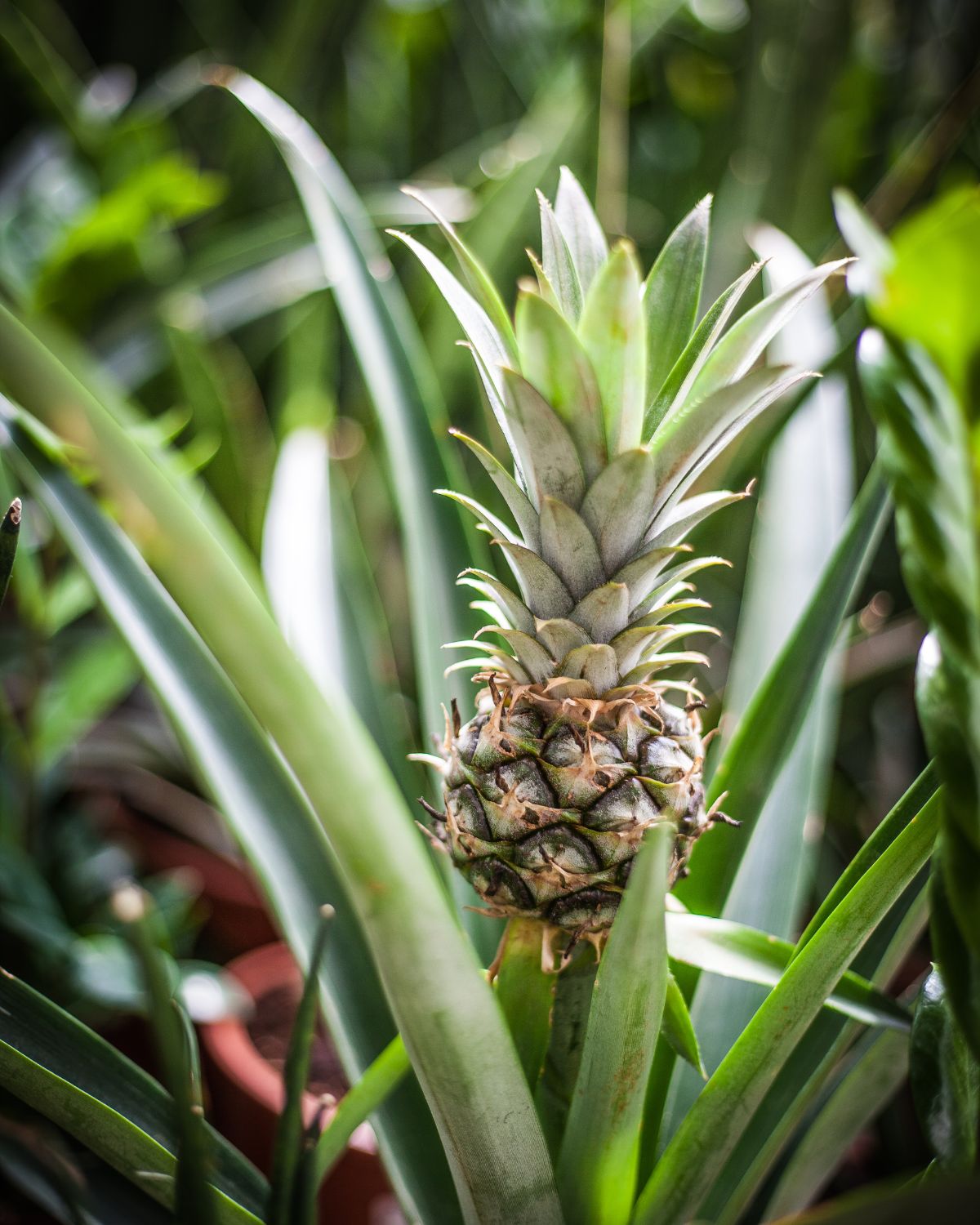
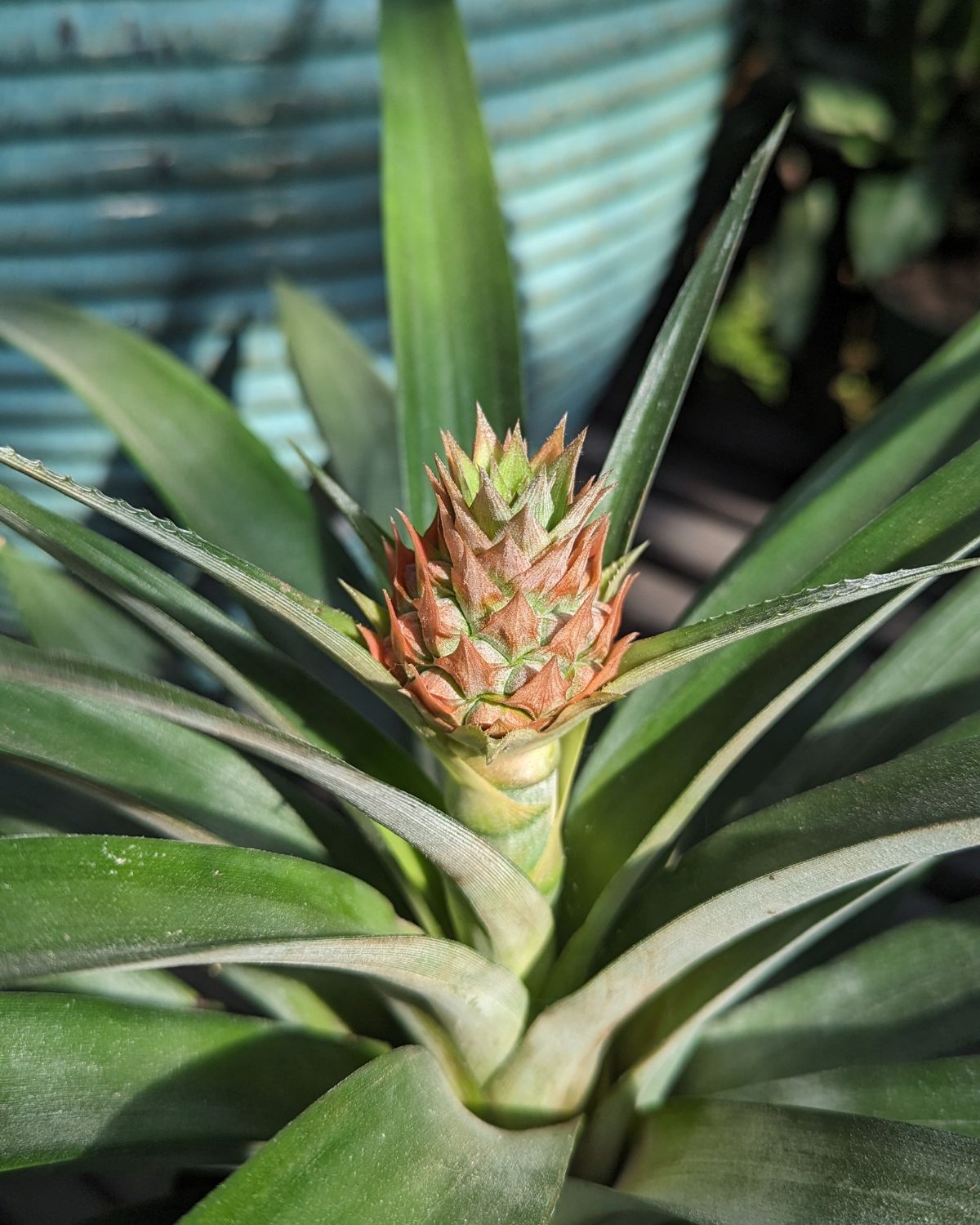
Blooms, Pups, Propagation
While the captivating foliage alone makes bromeliads a worthwhile houseplant, the most interesting trait has to be their blooming and reproduction methods.
Bromeliads only produce one bloom or fruit in their life-cycle. This can sound like a negative, but these unique plants have one last trick up their sleeve…
- Blooms:
The colorful bracts that surround true flowers on bromeliads can last for months at a time. - Pups:
After the blooming cycle ends, bromeliads shift to producing “pups”. These are baby bromeliads that emerge from the base of the mother plant. Pups are essentially clones of the parent, providing a nature way for bromeliads to reproduce. - Propagation:
Bromeliad pups are key to propagation. Allow pups to reach 1/3 the size of the mother plant. Carefully remove pups from the mother, preferable with a cutting instrument. Finally, pot the pups in a well-draining potting mix.
That’s pretty much all you need to know to get started! Louisiana Nursery has been stocking bromeliads for many years now, offering high-quality plants, care-products, and preferred soil mediums like bromeliad mix. Grab everything you need and more today!
Thanks for reading
Bromeliads – a genus of the family bromeliaceae – encompass so many different iconic varieties we carry at Louisiana Nursery. From the vibrant, spikey blooms of Guzmania to the sweet fruits of the edible pineapple, you can spend hours down the rabbit hole learning about them all!
Today, we’ll cover just a few of these varieties with beautiful pictures and a care-guide to go with. Let’s start where it all begins: The wild bromeliad.
Native Habitats & Characteristics
Bromeliads are a gift from the tropics & subtropics of the Americas. You can find them in a vast array of habitats including:
- Rainforest Canopies:
Many bromeliads are epiphytes, meaning they cling to the branches of trees to access sunlight and moisture in the dense forest canopy. - Rocky Outcrops & Mountainsides:
Other bromeliads prefer rocky cliffs and mountainsides, adapting to harsher conditions - Terrestrial Habitats:
Some bromeliads have evolved to grow directly in the soil, spreading their roots like the plants we’re more familiar with.
Regardless of their specific habitat, bromeliads share some fascinating characteristics that make them stand out in the plant world:
- Central Cup:
Most bromeliads feature a rosette of leaves that form a central “cup” or tank. This cup collects rainwater and debris, providing the plant with essential nutrients and moisture. - Colorful Bracts:
The vibrant blooms are what made bromeliads famous. However, what appears as a flower is actually a cluster of colorful leaves called bracts that surround the true, less-showy flower. - Unique Adaptations:
Epiphytes (air plants) have specialized scales on their leaves to absorb nutrients and moisture directly from the air. - Symbiotic Relationships:
Bromeliads form intricate relationships with other rainforest creatures. The pools of water in their cups provide habitats for insects, tadpoles, and even tiny frogs.
Our Bromeliad Varieties
Like we mentioned before, our store features guzmania, tillandsia, and ananas, with a few others based on availability.
All of these plants do well with medium or bright indirect light. Watering is dependent on terrestrial or epiphytic traits. None of the bromeliads we carry can handle much frost, being very cold-sensitive.
Regardless, each category has many unique varieties to choose from.
Guzmania
These are those spiky, colorful bracts we talked about! Guzmania bromeliads are the most recognizable plants on this list. Whether that’s because we stock a TON or because the bright colors catch our eye, we can’t get enough of them!
For the majority of gardeners, guzmania is treated as and considered a houseplant. We stock terrestrial varieties that take well to containers, often utilizing self-watering pots to make care simple. They’re adaptable to bright window lighting, and will bloom if given enough time. Expect a mature height of 3ft and width of 2ft.
Another guzmania bromeliad, the ‘Vreisea’ variety creates a flattened structure with its bracts. You can find the rosette and this “pancake” style in multiple colors.
Tillandsia (Air Plants)
The category commonly referred to as “air plants”, tillandsia are interesting additions to any collection! We carry varieties with stringier or wider, straight or curled, and green or variegated leaves. Rather than potting them up, we use driftwood and other nature-scape decor to display them.
Tillandsia are epiphytic plants, grabbing moisture and nutrients from the air while anchoring themselves with small roots.
This can sound like a “set-it and forget-it” dream… However, the humidity they’re used to just doesn’t exist to the same degree inside our homes. It’s still easier than most plants, though!
To water, take your tillandsia and soak the entire plant in a bucket for 30-minutes. Then – holding the plant upside down – shake as much water out of the crevices as possible. Finally, lay the plant on a dish-towel and allow it to dry for 30-minutes.
Repeat once a week to make sure your plants never get thirsty!
Ananas (Pineapple)
Yes, you can grow your very own edible pineapples (Ananas comosus) at home! Ananas are terrestrial like guzmania, making containers a great option.
Broadly speaking, ananas can be differentiated as edible or ornamental. Edible ananas – pictured above – have green foliage, and leaves at the head of the fruit are 1-to-1 what’d you’d expect them to look like.
Ornamental ananas – pictured below – still develop an (inedible) fruit. Some varieties offer colorful bracts, taking more notes from guzmania. Expect a mature height of 3ft, and width between 3-5ft.
Blooms, Pups, Propagation
While the captivating foliage alone makes bromeliads a worthwhile houseplant, the most interesting trait has to be their blooming and reproduction methods.
Bromeliads only produce one bloom or fruit in their life-cycle. This can sound like a negative, but these unique plants have one last trick up their sleeve…
- Blooms:
The colorful bracts that surround true flowers on bromeliads can last for months at a time. - Pups:
After the blooming cycle ends, bromeliads shift to producing “pups”. These are baby bromeliads that emerge from the base of the mother plant. Pups are essentially clones of the parent, providing a nature way for bromeliads to reproduce. - Propagation:
Bromeliad pups are key to propagation. Allow pups to reach 1/3 the size of the mother plant. Carefully remove pups from the mother, preferable with a cutting instrument. Finally, pot the pups in a well-draining potting mix.
That’s pretty much all you need to know to get started! Louisiana Nursery has been stocking bromeliads for many years now, offering high-quality plants, care-products, and preferred soil mediums like bromeliad mix. Grab everything you need and more today!
Thanks for reading


